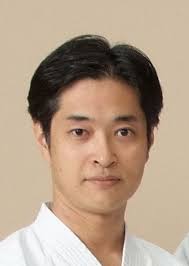The Decline of Okinawan Kumite
As far as I know, there is no way that Kyan Sensei did not practice kumite. As I mentioned previously, a book (manuscript) on kumite by Kyan Sensei has recently been discovered. It seems that some pre-war karate practitioners only performed kumite in their books and did not practice it on a regular basis, but this was not the case with Kyan Sensei. There is an oral record that he practiced kumite with Motobu Chōki. I was also told that the saga of “Chan Mī-gwā” and “Motobu Zārū” is the most common in Okinawa. In fact, many anecdotes about these two men appear in the folk tales included in the local histories published by each municipality in Okinawa. In other words, these two men were known as “real fighters” who put more emphasis on kumite in Okinawa before World War II.

So, I honestly do not know why his lineage does not practice kumite. However, the mainstream of post-war Okinawan karate tended to avoid kumite. In a word, they thought that kumite was for barbarians. In the midst of this trend, a kind of “peer pressure” may have been applied, and the practice of kumite may have been discontinued.
For example, Higa Kiyohiko Sensei of the Bugeikan once told me that Chibana Chōshin of Kobayashi-ryū did not teach kumite. Kiyohiko’s father, Higa Seitoku, was an early student of Uehara Sensei, but had also studied under Chibana Sensei before that. I asked if Chibana Sensei had not taught his students kumite at all, and Kiyohiko Sensei said yes.
I had imagined that Chibana Sensei’s teaching method was probably mainly kata training, but the fact that Chibana Sensei did not teach kumite at all was a surprise. Later, I heard the same story from several people involved in Kobayashi-ryū. However, this was the norm in Okinawa in the 1950s. At that time, only a few schools, such as Okinawa Kenpō, Isshin-ryū, and Motobu-ryū (Motobu Udundī), practiced kumite in Okinawa, and they were often considered heretical by the mainstream of Okinawan karate.
Kyan Sensei taught in Kadena (20 km north of Naha) and his karate was sometimes derided as an “Inaka-dī” (literally, country hand) by the people of Shuri and Naha. Of course, he was born in Shuri, and his family, the Kyan Dunchi, is one of the most prestigious in Okinawa. Normally, no one would call Kyan Sensei a country bumpkin, but after the war, such an origin was forgotten, and the Kyan lineage may have felt inferior in some way. Perhaps they felt inferior to the mainstream, and the pressure to conform to the mainstream acted on them.
In Okinawa, kumite started to flourish in the 1980s, shortly before the 1987 Kaihō National Athletic Meet. This was because Okinawa, the birthplace of karate, could not afford to lose in the national karate competition, so it strengthened its kumite training. However, the rules of the National Athletic Meet were of course established by the karate schools on the mainland.
As a result, the traditional Okinawan kumite has declined. With the exception of a few, it has become impossible to know what the original Okinawan kumite was. That is why Kyan Sensei’s kumite book is attracting so much attention, perhaps in the hope that it will provide a clue to the restoration of the declining Okinawa kumite. Therefore, in the future, as research progresses, the once declining tradition may be revived once again.
The original Japanese article was posted on Ameblo on August 2, 2021, and the English translation was posted on August 3, 2021.
Thank you for reading my story. If you would like, please follow me.
Written by:

Thank you for reading my story. If you would like, please follow me.
Shihan, Motobu Kenpō 7th dan, Motobu Udundī 7th dan. Discusses the history of karate and martial arts, and introduces Japanese culture and history.
